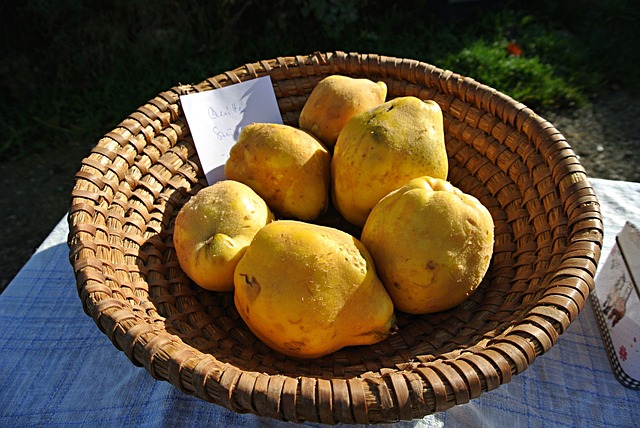Regular tree trimming is vital for landscape maintenance, offering aesthetic benefits, disease prevention, and enhanced air circulation. Optimizing trim schedules encourages healthy growth and fosters sustainable yard waste management. Efficient removal and recycling of trimmings reduce environmental impact by minimizing landfill contributions and promoting compost or biofuel resources. Proper tools are essential, including safety gear, baggers, and blowers with on-site composting capabilities. Careful planning involves assessing tree structure, clearing workspace, setting up a drop zone, and adhering to local regulations for responsible removal and recycling of yard waste, contributing to a healthier environment and reduced carbon footprint.
In today’s world, proper tree care is essential for maintaining a healthy landscape. Regular tree trimming not only enhances aesthetics but also ensures the safety of your property and surroundings. This article delves into the significance of tree maintenance, offering insights on effective yard waste removal and recycling strategies. From understanding the benefits of trimming to avoiding common mistakes, you’ll discover practical tips for managing debris, ensuring a greener and more sustainable environment.
- Understanding the Importance of Regular Tree Trimming
- Benefits of Efficient Debris Removal and Recycling
- Essential Tools and Equipment for the Job
- Step-by-Step Guide to Safe and Effective Tree Trimming
- Strategies for Responsible Debris Disposal and Recycling
- Common Mistakes to Avoid During Yard Waste Management
Understanding the Importance of Regular Tree Trimming

Regular tree trimming is an essential practice for maintaining a healthy and safe landscape, offering numerous benefits beyond aesthetic appeal. Well-maintained trees contribute to better yard waste removal and recycling efforts by reducing debris and simplifying the process of disposal or reuse. Pruning helps prevent disease and pest infestations, ensuring your trees remain robust and minimizes the risk of damage to nearby structures.
By understanding the optimal times to trim based on tree species and seasonal growth patterns, property owners can enhance their curb appeal while promoting environmental sustainability. Proper trimming encourages healthy growth, allowing for better air circulation and sunlight penetration, which is vital for plant vitality. This proactive approach not only preserves the beauty of your surroundings but also fosters a more sustainable and eco-friendly yard waste management strategy.
Benefits of Efficient Debris Removal and Recycling

Efficient debris removal and recycling, often overlooked aspects of tree trimming services, offer significant environmental and economic benefits. By properly managing yard waste, such as branches, leaves, and trimmings, communities can reduce their ecological footprint. This process minimizes the amount of material ending up in landfills, which is a major contributor to greenhouse gas emissions. Instead, recyclable materials can be transformed into valuable resources like compost, mulches, or biofuels, fostering a circular economy and promoting sustainability.
Moreover, efficient debris removal keeps public spaces and residences cleaner and safer. Well-maintained landscapes enhance the aesthetics of neighborhoods, increasing property values. Proper recycling practices ensure that organic matter is broken down naturally, reducing soil and water pollution. This, in turn, supports biodiversity and contributes to a healthier ecosystem.
Essential Tools and Equipment for the Job

When it comes to tree trimming and debris removal, having the right tools is crucial for a safe and efficient job. For tree trimming, sharp pruners and shears are essential to make clean cuts and prevent damage to the tree. A sturdy ladder and safety equipment, like gloves and eye protection, are also vital, especially when reaching high branches.
For debris removal, a good quality bagger or blower is indispensable for collecting and moving yard waste. These tools not only facilitate efficient cleanup but also promote responsible Yard Waste Removal and Recycling practices. Many modern models even come with features to compost organic material on-site, reducing the environmental impact of your efforts.
Step-by-Step Guide to Safe and Effective Tree Trimming

Tree trimming is an essential part of maintaining a healthy and aesthetically pleasing landscape, but it can be a daunting task. To ensure safety and effectiveness, follow this step-by-step guide:
1. Plan Ahead: Before you start, assess the tree’s structure and determine which branches need trimming. Identify any potential hazards, such as dead or diseased branches, that should be removed first. Gather all necessary tools, including pruning shears, loppers, a ladder (if needed), and protective gear like gloves and safety goggles.
2. Prepare Your Workspace: Clear a safe area around the tree, removing any yard waste or debris from the ground below to prevent injury or damage. Set up a drop zone for cut branches, ensuring it’s far from power lines or other structures. Consider the environment and weather conditions; trim during dry periods to avoid spreading fungal infections and always be mindful of your surroundings to prevent accidents.
Strategies for Responsible Debris Disposal and Recycling

When it comes to tree trimming and debris removal, responsible disposal and recycling practices are essential for minimizing environmental impact. One effective strategy is to compost organic materials such as leaves, grass clippings, and small branches. Composting not only reduces the amount of yard waste sent to landfills but also creates a nutrient-rich soil amendment that can be used to enhance garden and landscape health.
Additionally, many communities offer yard waste removal and recycling programs specifically designed to divert organic materials from landfills. These programs often include dedicated collections for items like tree trimmings, brush, and other vegetative debris. By participating in these initiatives, residents contribute to a more sustainable cycle where natural resources are reused and recycled, fostering a healthier environment and reducing the carbon footprint associated with waste disposal.
Common Mistakes to Avoid During Yard Waste Management

Many homeowners tackle tree trimming and yard waste removal as a DIY project, but there are common mistakes to avoid for effective yard waste management. One of the primary errors is failing to differentiate between materials that can be recycled and those that should be disposed of. Organic waste, such as trimmings, branches, and leaves, can often be composted or recycled through local programs, reducing yard waste removal costs and environmental impact. However, improperly sorting these materials can lead to contamination and render them unusable.
Another mistake is not planning for safe and efficient debris removal. Without proper equipment or a clear strategy, removing tree trimmings and other yard waste can become a laborious and potentially hazardous task. It’s crucial to have a system in place for collecting, transporting, and disposing of or recycling these materials responsibly. This includes securing permits if required by local regulations and ensuring compliance with yard waste removal and recycling guidelines.
Regular tree trimming and responsible debris removal are essential practices for maintaining a healthy landscape. By understanding the benefits of these tasks, arming yourself with the right tools, and following a structured guide, you can effectively care for your trees while also contributing to eco-friendly yard waste removal and recycling practices. Avoid common mistakes, and your efforts will not only enhance your property’s aesthetics but also promote a more sustainable environment.



